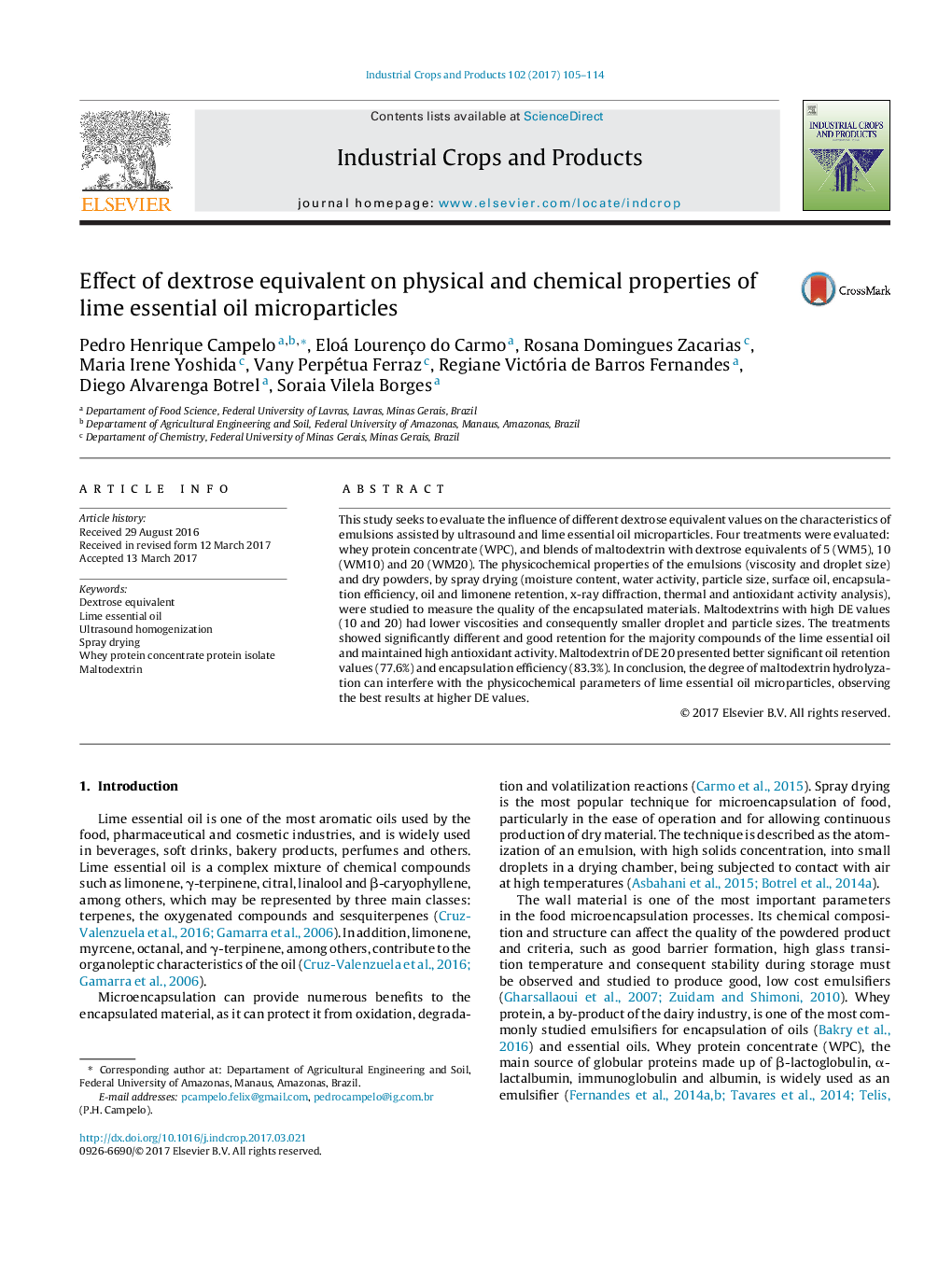| Article ID | Journal | Published Year | Pages | File Type |
|---|---|---|---|---|
| 5762152 | Industrial Crops and Products | 2017 | 10 Pages |
Abstract
This study seeks to evaluate the influence of different dextrose equivalent values on the characteristics of emulsions assisted by ultrasound and lime essential oil microparticles. Four treatments were evaluated: whey protein concentrate (WPC), and blends of maltodextrin with dextrose equivalents of 5 (WM5), 10 (WM10) and 20 (WM20). The physicochemical properties of the emulsions (viscosity and droplet size) and dry powders, by spray drying (moisture content, water activity, particle size, surface oil, encapsulation efficiency, oil and limonene retention, x-ray diffraction, thermal and antioxidant activity analysis), were studied to measure the quality of the encapsulated materials. Maltodextrins with high DE values (10 and 20) had lower viscosities and consequently smaller droplet and particle sizes. The treatments showed significantly different and good retention for the majority compounds of the lime essential oil and maintained high antioxidant activity. Maltodextrin of DE 20 presented better significant oil retention values (77.6%) and encapsulation efficiency (83.3%). In conclusion, the degree of maltodextrin hydrolyzation can interfere with the physicochemical parameters of lime essential oil microparticles, observing the best results at higher DE values.
Related Topics
Life Sciences
Agricultural and Biological Sciences
Agronomy and Crop Science
Authors
Pedro Henrique Campelo, Eloá Lourenço do Carmo, Rosana Domingues Zacarias, Maria Irene Yoshida, Vany Perpétua Ferraz, Regiane Victória de Barros Fernandes, Diego Alvarenga Botrel, Soraia Vilela Borges,
